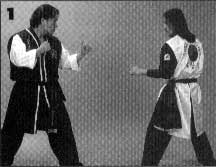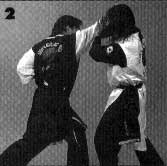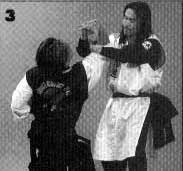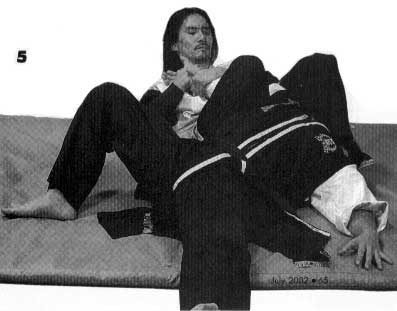In our last installment of this two-part series, we examined the extreme aerial kicks of the Korean martial art of hwa rang do. Now, we'll take a look at the flip side of hwa rang do fighting - ground grappling.
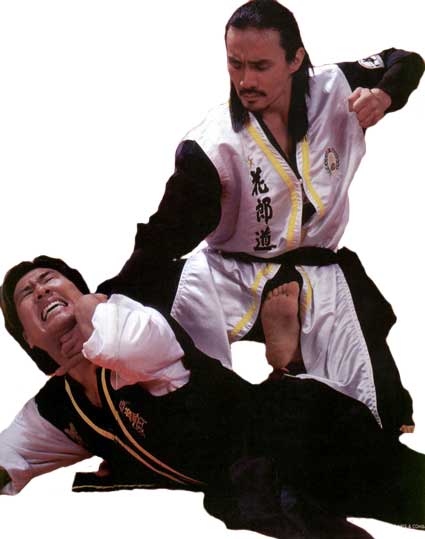
With the popularity of Brazilian jiu-jitsu and no-holds-barred tournament fighting over the past few years, it's easy to see why any art would want to incorporate ground grappling techniques into its arsenal.
Actually, hwa rang do has had a complete repertoire of ground techniques since its inception in the 1960s. Now, with martial arts students eager to learn more of these techniques, chief master Taejoon Lee sheds some light on this relatively obscure part of this Korean art.
Part of the Picture
Hwa rang do is well-known for its spectacular joint locks and throws, and
its students regularly demonstrate their competence in the "standing-grappling"
range. According to Lee, however, this is just part of the picture.
"Some martial arts instructors have made the grave mistake to say they are well-versed in grappling when, [in reality], they are only familiar with the part of grappling that is composed of standing joint-locks and throws," says Lee. "They're seeing only half of the picture."
For a person to really understand empty-hand grappling, he has to know what to do if the fight goes to the ground, he says.
"Fortunately, hwa rang do is a complete martial art and offers us a
way to grapple confidently in any range: stand-up distance, stand-up in-close
and on the ground," he adds.
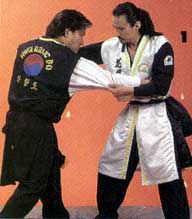
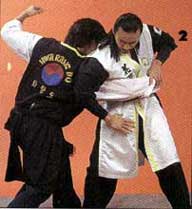
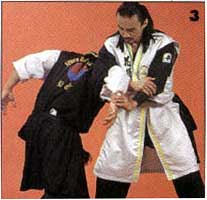
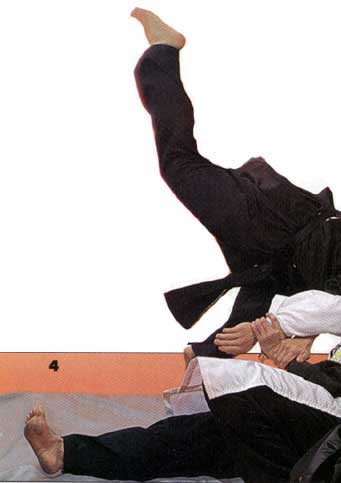
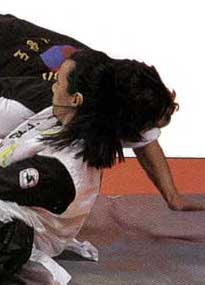
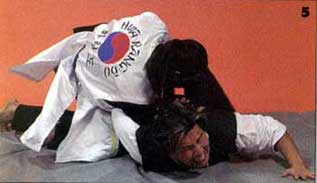
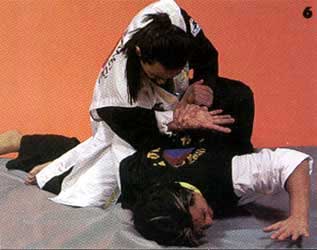
In all of hwa rang do's techniques, the goal is to move in close, execute a takedown, and finish the opponent in the quickest, effective means possible, he says.
"However, going to the ground together with the opponent and wrestling is not the goal, but merely an option," he adds.
In traditional Korean culture, during an honorable match with an opponent, the person who is knocked down loses and submits of his own accord, accepting the loss. Only in self-defense when you are fighting for your life does the need to go to the ground arise. For this purpose, hwa rang do has extensive techniques to subdue the opponent on the ground.
Basic Curriculum
Hwa rang do's basic curriculum, which can be applied for ground fighting,
includes but is not limited to the following defenses:
Clothing grabs (hoshin we bok sul)
Body grabs (che gong sul)
Wrist grabs (hoshin wan sul)
Offensive throwing techniques (kongkyuk too gi sul)
Throws (hoshin bang too gi sul)
Two-handed grabs (hoshin yang soo gi sul)
Offensive choking (kongkyuk jo ru gi sul)
From seated position (hoshin jwa gi sul)
Offensive pressure point techniques (kongkyul jwagi jiap sul)
Special joint dislocation techniques (teuk soo gol jel gi sul)
And, of course, this does not take into consideration all of the striking
techniques with both the hands and the feet found in hwa rang do.
Lee says, "As there are a limited number of ways that the body can be attacked with a grab, the responses fall into similar patterns, regardless of whether standing or on the ground. We all have the same joints that can be attacked, even if we don't all feel pain in the same way."
Thus, you have to think about the limbs and then think of how they can be attacked, he adds. There are three basic sections of the body, and you can divide those further, depending on how accessible the joint is and "how easily you can elicit a pain response." According to Lee, the basic targets are as follows:
Arm: fingers, wrist, elbow, shoulder
Leg: ankle, knee, hip
Torso: lumbar spine, neck
These are the points of greater vulnerability for grapplers to focus on when
working for a submission or joint displacement. On a strategic level, the
chief master lays out some very simple points for those choose to grapple.
"The nature if human beings is that they usually will do the opposite of what you want them to do, so you have to gear your response accordingly to create stronger leverage for yourself," he says. "If you pull them close to you and they push away, you have to be ready to take advantage of that and capitalize on the openings in their positions. Think of it like playing chess. You set up your moves intelligently and then seize the opportunity when it arises. Furthermore, like all things, it is easier to control when it is closer to you than further away."
As it is stand up fighting, distance is crucial on the ground as well as spacing, says Lee. You have to limit the space and distance between your opponent and yourself. The greater the spacing, there is a greater chance of execution of a technique. Therefore, to be an effective grappler - you have to learn effectively with limited spacing, he adds.
Joint Locks in the Ground
All of the joint locks that practitioners learn in the standing range can
also be applied on the ground. The big difference is that there are new challenges
to be aware of because of the different body positions, he says.
For example, you don't have the same mobility on the ground that you would have on your feet. At the same time the ground supports the body for movement in other ways and vectors. The legs, which are used for positioning and balance while standing, are used as extra limbs, "much like an octopus," to control and gain leverage over the opponent, he says.
